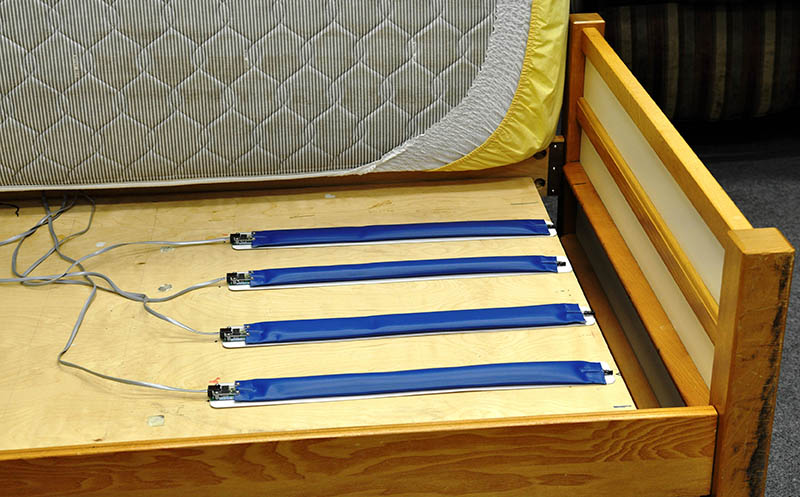July 11, 2022

There are a lot of companies making bed sensors that monitor your health while you sleep. Curators’ Distinguished Professor Marjorie Skubic not only made one, she’s also tried a lot of them.
The crowded market is one reason it took more than a decade for Skubic to patent the one she and her team designed. But the recently awarded patent confirms what she’s known for years — that the hydraulic bed sensors developed at Mizzou Engineering are truly unique.
Skubic’s now-patented bed sensors are made with a flexible tube of water that measures blood flow to capture heart rate, respiratory rate and cardio activity. What differentiates the product is that it was created for older adults, whereas many similar bed sensors on the market were made with young, healthy subjects in mind.
“Athletes and young people are trying to track sleep and overall health, and that’s a completely different target population,” said Skubic, a professor of electrical engineering and computer science. “Many of the other bed sensors provide nice signals for young, healthy subjects, which are easier to process.”
Another difference is in the sensitivity of the system, which is placed under a mattress to record patterns during sleep. Unlike the Mizzou made hydraulic sensor, some commercial sensors are so sensitive that signals can get crossed when two people share a bed.

“If you have one sensor under Mrs. Smith and another under Mr. Smith, and Mrs. Smith gets out of bed, her bed sensor begins picking up and reporting his data,” Skubic said. “I’ve seen this with my own husband because we have quite different resting heart rates. If I’m testing a different system, I can immediately tell when my bed sensor starts picking up his data.”
The idea for the bed sensor dates back nearly 20 years when Skubic and collaborators began working on eldercare technology at Tiger Place Apartments. She and Marilyn Rantz, a Curators’ Distinguished Professor Emerita in the School of Nursing, were using a simple bed sensor system that monitored heart rate but provided only thresholds. A person’s heart rate was deemed “low,” “normal” or “high.” Rantz wanted an exact number.
“Finally, one of the PhD students working on the project, David Heise — who is now on faculty at Lincoln University — went to the hardware store and bought $20 worth of supplies and created the prototype that would become the hydraulic bed sensor,” Skubic said.
Skubic is now working with Professor Giovanna Guidoboni to further expand the work, using sensors to monitor interactions between the heart and cardiovascular system.
Also included on the recent patent award are: Rantz, Mihail Popescu, Shuang Wang, Isaac J Sledge, Rainer Dane A Guevara, Elena Florea, and Jim Keller.
Learn and work alongside world-class faculty making a real-world difference. Learn more about electrical engineering and computer science at Mizzou.